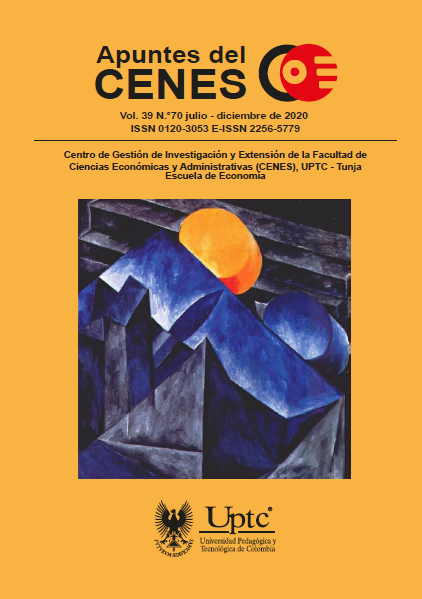The Corporate Income Tax in Colombia: its Effective Rate and its Relationship with Investment

Abstract
In Colombia it is traditional that discussions about tax reforms indicate that corporate taxation is so burdensome that it drives away the investment and slows down economic growth, which is why preferential tax treatments or tax cuts are promoted. This is, in fact, what is behind the most recent tax reform in Colombia, which was named as the Financing Law in 2018, but this research shows two facts. The first one is that the effective rate of Corporate Income Tax is not as high as it is stressed in Colombia by the media, economic unions and many politicians, for which we take into account tax reporting data provided by the Colombian tax administration office (DIAN) for 2016. The second issue is related to the generally accepted hypothesis that taxation discourages investment, which is denied through a data panel analysis across 109 countries (including Colombia) and the period 2006-2015.
Keywords
corporate income tax; investment; foreign direct investment; effective tax rate; financing law;
References
1. Adam, A., Kammas, P. & Lagou, A. (2013). The Effect of Globalization on Capital Taxation: What Have we Learned After 20 Years of Empirical Studies? Journal of Macroeconomics, 35, 199-209. https://doi.org/10.1016/j.jmacro.2012.09.003
2. Agostini, C. & Jalile, I. (2009). Efectos de los impuestos corporativos en la inversión extranjera en América Latina. Latin American Research Review, 44(2), 84-108. https://doi.org/10.1353/lar.0.0127
3. Alm, J. (1996). What is an Optimal Tax System. National Tax Journal , 49(1), 117-133.
4. Arellano, M. & Bond, S. (1991). Some Tests of Specification for Panel Data: Monte Carlo Evidence and an Application to Employment Equations. The Review of Economic Studies, 58 (2), 277–297. https://doi.org/10.2307/2297968
5. Atkinson, A. & Stiglitz, J. (2015). Lectures on Public Economics. Princeton University Press.
6. Banco Mundial. (2018). Global Investment Competitiveness Report 2017/2018: Foreign Investor Perspectives and Policy Implications. World Bank.
7. Beck, N. & Katz, J. (1995). What to do (and not to do) with Time-Series Cross-Section Data. American Political Science Review, 89(3), 634-647. https://doi.org/10.2307/2082979
8. Bokpin, A., Mensah, L. & Asemoah, M. (2015). Foreign Direct Investment and Natural Resources in Africa. Journal of Economic Studies, 42(4), 608-621. https://doi.org/10.1108/JES-01-2014-0023
9. Castañeda-Rodríguez, V. (2016). Las crisis económicas y el escenario político en la introducción de reformas tributarias. La experiencia argentina (1980-2010) y una constatación para América Latina. Cuadernos de Economía, 35(67), 173-206. https://doi.org/10.15446/cuad.econ.v35n67.52466
10. Castañeda-Rodríguez, V. (2019). The 2016 Tax Reform in Colombia: a Patchwork Quilt. Cuadernos de Administración, 35(65), 72-91. https://doi.org/10.25100/cdea.v35i65.7676
11. Chanegriha, M., Stewart, C. & Tsoukis, C. (2017). Identifying the Robust Economic, Geographical and Political Determinants of FDI: An Extreme Bounds Analysis. Empirical Economics, 52(2), 759–776. https://doi.org/10.1007/s00181-016-1097-1
12. Doing Business. (2019, April 27). Doing Business. http://www.doingbusiness.org/en/data/exploreeconomies/colombia#DB_tax
13. García, A. (2016, 7 mar.). Los altos impuestos son un suicidio para la economía. El País, p. 18.
14. Gómez, H. & Steiner, R. (2015). La reforma tributaria y su impacto sobre la tasa efectiva de tributación de las firmas en Colombia. Coyuntura Económica: Investigación Económica y Social, 45(1), 13-44.
15. Hunady, J. & Orviska, M. (2014). Determinants of Foreign Direct Investment in EU Countries. Do Corporate Taxes Really Matter? Procedia Economics and Finance, 12, 243-250. https://doi.org/10.1016/S2212-5671(14)00341-4
16. Jiménez, J. & Podestá, A. (2009). Inversión, incentivos fiscales y gastos tributarios en América Latina. CEPAL.
17. Ministerio de Hacienda y Crédito Público (2018, 31 de oct.). Exposición de motivos del proyecto de ley “por la cual se expiden normas de financiamiento para el restablecimiento del equilibrio del presupuesto nacional y se dictan otras disposiciones”. MHCP.
18. Rincón-Castro, H. & Delgado-Rojas, M. E. (2018) ¿Cuánto tributan efectivamente el consumo, el trabajo y el capital en Colombia? Reportes del Emisor, 229, 5. https://doi.org/10.32468/be.1041
19. Villabona, J. & Quimbay, C. (2017). Tasas efectivas del impuesto de renta para sectores de la economía colombiana entre el 2000 y el 2015. Innovar, 27(66), 91-108. https://doi.org/10.15446/innovar.v27n66.66805
20. Villaverde, J. & Maza, A. (2015). The Determinants of Inward Foreign Direct Investment: Evidence from the European Regions. International Business Review, 24(2), 209-223. https://doi.org/10.1016/j.ibusrev.2014.07.008
